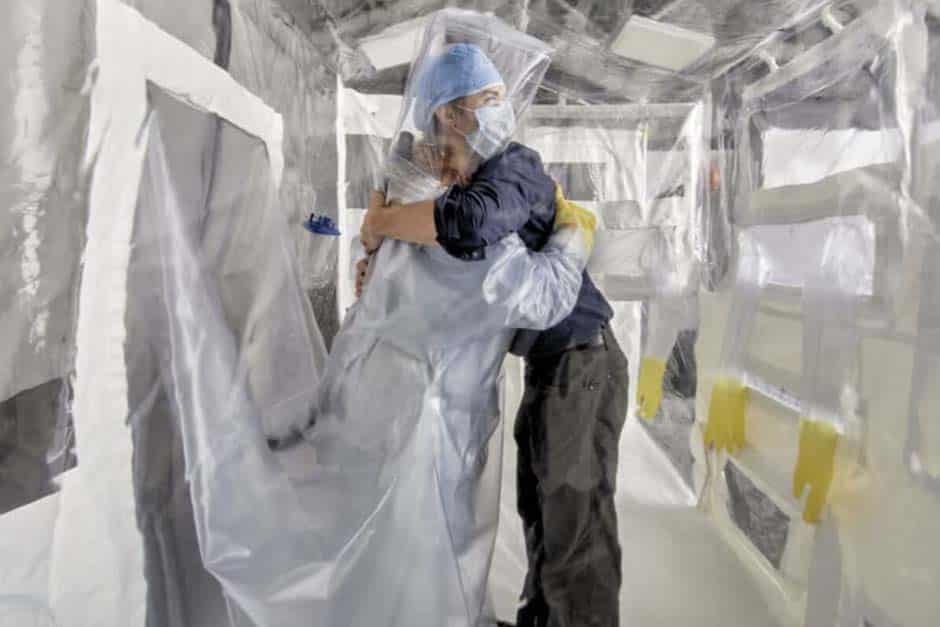Why Do You Need To Heat Seal Laminates?

The evolution of manufacturing processes has been marked by constant innovation and refinement, and heat sealing is a prime example. Tracing its roots back to the 20th century, heat sealing began as a simple method to bond thermoplastic materials together using heat. As industry needs grew more complex, the technique evolved, giving birth to radio frequency (RF) sealing in the 1940s. RF sealing, a more advanced form of heat sealing, leverages the power of electromagnetic energy to create strong, consistent seals.
From healthcare to aerospace, these sealing techniques are used widely in the production of a range of products like fuel bladders and isolation chambers, with laminates being a significant area of application.
What is Heat Sealing?
Heat sealing is a process used in manufacturing that employs heat and pressure to bond two materials together. Typically, these materials have a thermoplastic layer. When heat is applied to the surface of the materials, it causes the thermoplastic layers to soften and merge, creating a seal. Upon cooling and solidification, a strong bond is formed that effectively joins the two materials.
In the context of laminates, heat sealing is often used to bond different layers together. A laminate generally consists of two or more layers of material, which could be the same or different types of material. The layers are bonded together to create a composite material that possesses the combined properties of the individual layers.
Heat sealing is a preferred method for manufacturing laminates due to its ability to create strong, reliable seals. The process can be tailored to suit different materials and product specifications, making it a versatile solution for a range of applications.
Why Do You Need to Heat Seal Laminates?
Heat sealing is an indispensable process for laminates due to a number of reasons. First and foremost, it enables the creation of strong, durable bonds between different layers of material. This results in laminates that are robust and can withstand various operational stresses.
The strength of the bonds created through heat sealing contributes to the longevity of the laminate. Products manufactured using heat-sealed laminates tend to have a longer lifespan, providing better value to businesses and their customers.
Heat sealing also offers consistency. With the right equipment and settings, the process can create uniform seals across large surfaces. This is particularly important in industries where consistency and quality are paramount.
Even better, heat sealing allows for the combination of different types of materials in a laminate. This is crucial for creating composite materials that exhibit a blend of properties. For instance, a heat-sealed laminate could combine the strength of one material with the flexibility of another, resulting in a product that is both durable and versatile.
Lastly, heat sealing is a relatively efficient process. It can be automated and scaled up to meet high production volumes, making it a cost-effective solution for manufacturing laminates.
The Benefits of Heat Sealing Laminates
Quality: Heat sealing creates durable and robust bonds between different layers of a laminate. These bonds withstand operational stresses and contribute to the overall longevity of the final product. The ability to create a secure seal reduces the risk of product failure and enhances the reliability of the product in its intended application.
Versatility: Heat sealing is highly adaptable and can be customized to fit different types of materials and product designs. This adaptability extends to the production of laminates with diverse properties, enabling the creation of products tailored to specific needs.
Efficiency: Heat sealing is an efficient process that can be automated for large-scale production. This efficiency contributes to reduced manufacturing lead times and cost-effectiveness, which means competitive pricing for the final product.
Consistency: Heat sealing delivers consistent results across large surface areas. This consistency is crucial in industries where uniformity and precision are key to meeting regulatory standards and ensuring product performance.
Product Customization: Given the versatility of heat sealing, it is possible to create laminates that combine various materials with different properties. This allows for the production of bespoke products designed to meet unique customer requirements.
RF Sealing vs. Traditional Heat Sealing
While traditional heat sealing has its place in manufacturing, radio frequency (RF) sealing is often the preferred method when working with thermoplastic materials, including various types of laminates.
RF sealing, also known as dielectric sealing, uses electromagnetic energy to heat the materials from the inside out. This process results in a quicker, more efficient seal with uniform heat distribution, eliminating the risks of overheating or underheating that can occur with traditional heat sealing.
Choosing Your Heat Sealing Partner
In your search for the right heat sealing partner, consider their expertise, capabilities, commitment to quality, and customer service. Experience matters in delivering high-quality and reliable products. A manufacturer with proven capabilities can cater to your specific needs, ensuring your products meet your expectations.
Quality control is critical in ensuring the reliability of the end product. A manufacturer should adhere to strict quality standards, employing rigorous testing and inspection throughout the production process. And lastly, excellent customer service is key. A manufacturer who is responsive and committed to your success can make a significant difference in your experience.
Vinyl Technology also specializes in creating other products such as pneumatic mattresses, drinking water storage bags, and anti-g suits.
Our team at Vinyl Technology is ready to help you with your custom RF welding, RF Sealing, and PVC sealing needs. Get in touch with us today to learn how we can support your business.

